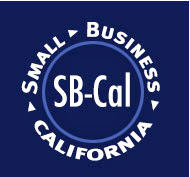The return to work piece below is a summary of State Funds guidelines. A link is provided for additional information.
One of the most effective ways to control workers’ compensation costs is to implement a return to work (RTW) program. An RTW plan can help an injured employee make an independent and successful return to work as soon as possible following an injury.
The longer injured employees are off work, the more likely they are to become permanently disabled. Injured workers who don’t return to work within 6 months have only a 50 percent chance of ever returning to the job held when they became injured. If the absence lasts more than a year, the chances of that employee returning to work drop to less than 10 percent.
Return to Work Programs Benefit Employers and Employees
A win-win situation for both the injured worker and the employer, an RTW program can reduce claims costs by getting the injured worker back on the job sooner through temporary modified duty. Numerous studies have shown that employees recover faster when they return to work.
RTW helps keep life as normal as possible for injured employees while they recover and integrate back into work. Economically, RTW may be able to help the employee retain stable income, benefits, and seniority. Additionally RTW helps the employee by reducing negative psychological effects such as disillusionment or anger at the loss of physical abilities or the ability to achieve career goals, and by fostering the positive effects of job security and interaction with friends and coworkers.
By implementing an RTW program you can:
• Improve morale among all employees.
• Gain control and increase potential for a positive resolution of the claim.
• Reduce or avoid temporary or permanent disability payments.
• Reduce medical costs.
• Reduce or avoid litigation.
• Discourage fraudulent claims.
• Avoid the replacement and training costs of hiring a new employee.
• Identify cross-training opportunities that enhance employees’ abilities in their regular jobs.
• Increase awareness of safe work practices and injury prevention.
For more information, please see link: http://www.smallbusinesscalifornia.org/RTW%20Program.pdf
I think you all know that California Unemployment is in debt about $10 billion to the Federal government. Small Business California is working with other business organization to find solutions to the problem. See below projected charges for California employers.
Employer’s Federal Unemployment Tax (FUTA)
Tax Year Annual Federal Tax Increase
Percent
(+ 0.3% per year) Tax Increase Per Employee $21 per year Total Increase for Employers Statewide
(Year Tax Paid)
2010 0.8 $56
2011 1.1 (through June 30)
0.9 (June 30 – Dec. 31) $77 (through June 30)
$63 (June 30 – Dec. 31)
2012 1.2 $84 $290,000,000
2013 1.5 $105 $581,760,000
2014 1.8 $126 $893,832,000
2015 2.1 $147 $1,239,455,000
2016 2.4 $168 $1,916,567,000
2019 3.3 $231 $2,624,801,000
Tax increases continue until debt is paid or tax rate reaches 6%
Scott Hauge
President
Small Business California
2311 Taraval Street
San Francisco, CA 94116
shauge@cal-insure.com
415-680-2188
Subscribe to:
Post Comments (Atom)



No comments:
Post a Comment